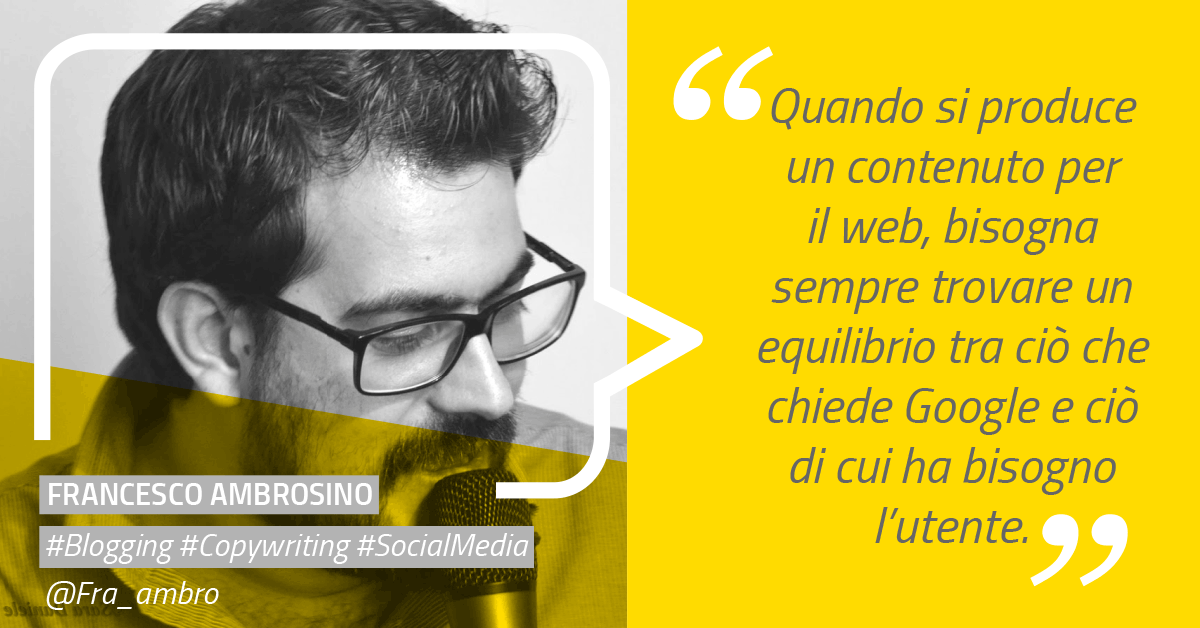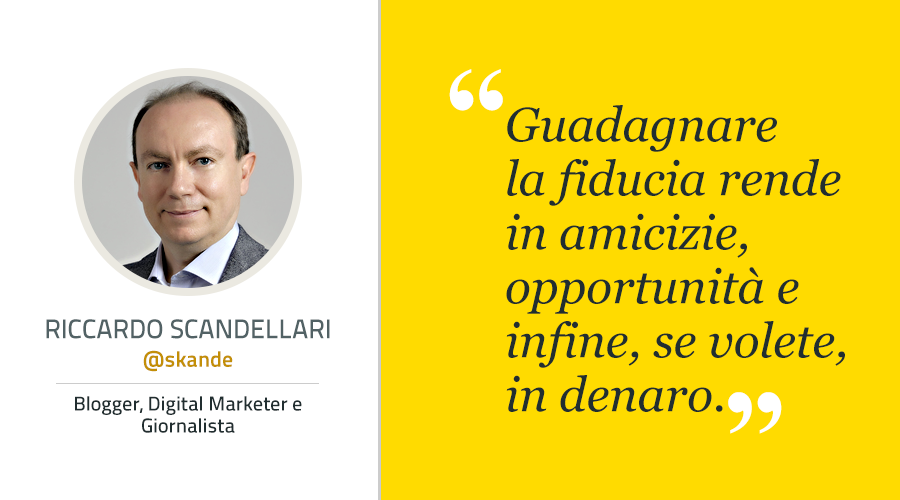Quanto deve essere lungo post? Ecco la domanda da 64 mila dollari, quella che tutti i blogger e i SEO si pongono costantemente, e alla quale ognuno fornisce una propria risposta, magari frutto di esperienze personali.
La verità è che non esiste una risposta univoca, né la formula magica per passare da 0 alla prima posizione su Google in un attimo.
Se esistesse, e la conoscessi, ti giuro che te lo direi.
Google o Essere Umano?
Quando si produce un contenuto per il web, in particolare un contenuto testuale come può essere un post del blog, bisogna sempre trovare un equilibrio tra ciò che chiede Google e ciò di cui ha bisogno l’utente che ha effettuato una ricerca precisa.
Non è facile trovare questo equilibrio, ma in parte passa anche dalla lunghezza del testo.
Banalmente, un testo molto lungo fornisce a Google più informazioni sul suo contenuto, ma potrebbe annoiare o scoraggiare il lettore. Al contrario, invece, un testo molto breve potrebbe essere letto in modo meno adeguato dal crawler ma per intero dal lettore.
Questa volta, però, la verità non sta nel mezzo, altrimenti dovremmo scrivere tutti articoli da 600 parole e vivere felici, come si faceva qualche anno fa.
Lunghezza è mezza bellezza
In realtà, le uniche evidenze di cui disponiamo ci informano che a posizionarsi meglio su Google sono gli articoli molto lunghi, di circa 2000 parole.

Contrariamente a quello che si potrebbe pensare, gli articoli molto lunghi sono anche i contenuti che ottengono maggiori condivisioni sui social.

Questo ci dice una cosa molto importante: non è vero che gli utenti non leggono i contenuti lunghi, perché se sono ben scritti, e soprattutto utili, allora li leggeranno.
E ricordati, chi non legge un articolo lungo non legge nemmeno uno breve. Semplicemente, non legge.
Articoli brevi vs Articoli lunghi: pro e contro
Io non amo gli articoli brevi, quelli da 300 parole scarse, perché credo nel valore formativo del mio lavoro, e non penso che un testo striminzito possa fornire informazioni utili al lettore.
Questo, però, è il mio approccio, e quello non conta. Contano i fatti.
Ci sono progetti editoriali che non necessitano di articoli molto lunghi, perché non puntano né al posizionamento né al valore educativo, si limitano a fornire informazioni, in stile bollettino Ansa. Mi riferisco a tutti quei portali di news dove l’approfondimento non è importante, ciò che conta è riportare quanto accaduto.
In questi casi, è preferibile scrivere articoli brevi, veloci da produrre e da fruire, dove ciò che andava detto viene detto subito, senza giri di parole.
Ci sono, poi, altri progetti editoriali, basati su contenuti di qualità, utili, divulgativi, nei quali il blogger deve per forza impegnarsi, perché in questi casi la produzione di articoli lunghi ed estremamente completi rappresenta un vantaggio competitivo.
Prendi Moz, o Neil Patel. Scrivono articoli lunghissimi, spesso molto tecnici, bellissimi, che chiunque operi nel mio settore deve non solo leggere, ma studiare e conservare per il futuro. Sai perché sono i migliori nel loro settore?
Perché producono contenuti utili, e sanno che il lettore si aspetta di vedere risolto un problema specifico, o di formarsi su argomenti specifici. Non bastano 300 parole per questo, per niente.
Leggere o scansionare, questo è il problema
Quando scriviamo un articolo, non dobbiamo pensare solo a quale sia il modo migliore per farlo, ma anche alla realtà all’interno della quale ci muoviamo.
Da quando siamo abituati a fruire di contenuti attraverso uno schermo, che sia quello del pc o dello smartphone, il nostro approccio alla lettura è cambiato molto.
Ormai non leggiamo più parola per parola, ma scansioniamo i contenuti, esattamente come fa il crawler di Google, dall’alto verso il basso, da sinistra a destra. Ci soffermiamo sui grassetti, sui titoli dei paragrafi, su eventuali elementi multimediali, ma non leggiamo tutto il testo.
Ecco, anche questo è un problema da affrontare, ed è evidente che nei testi molto lunghi si acuisca, ma non dobbiamo lasciarci scoraggiare.
In questa fase, entra in gioco la user experience, che deve spingerci a creare pagine pulite, con font leggibili, evitare i muri di testo, sfruttare i paragrafi ed evitare di abusare delle formattazioni.
Dobbiamo fare in modo che la permanenza sulla pagina sia molto, ma molto, piacevole.
Quando hai detto ciò che dovevi, metti il punto
Io credo moltissimo nel concetto di contenuto utile, contrapposto al fantomatico contenuto di valore, perché per me un articolo deve risolvere un problema specifico, insegnare qualcosa di nuovo o in modo nuovo.
Partendo da questo concetto, quindi, la lunghezza del testo è un elemento secondario, perché il vero obiettivo non è quello di scrivere un articolo breve affinché la gente possa leggerlo tutto, oppure uno lungo per posizionarsi meglio su Google.
Ciò che conta è l’utilità di quello che stai scrivendo. Se serve, scrivilo. Altrimenti, desisti.
E se ci riesci in 300 parole o in 3000, è irrilevante. L’importante è farlo.
Questo articolo è disponibile anche in: Inglese


